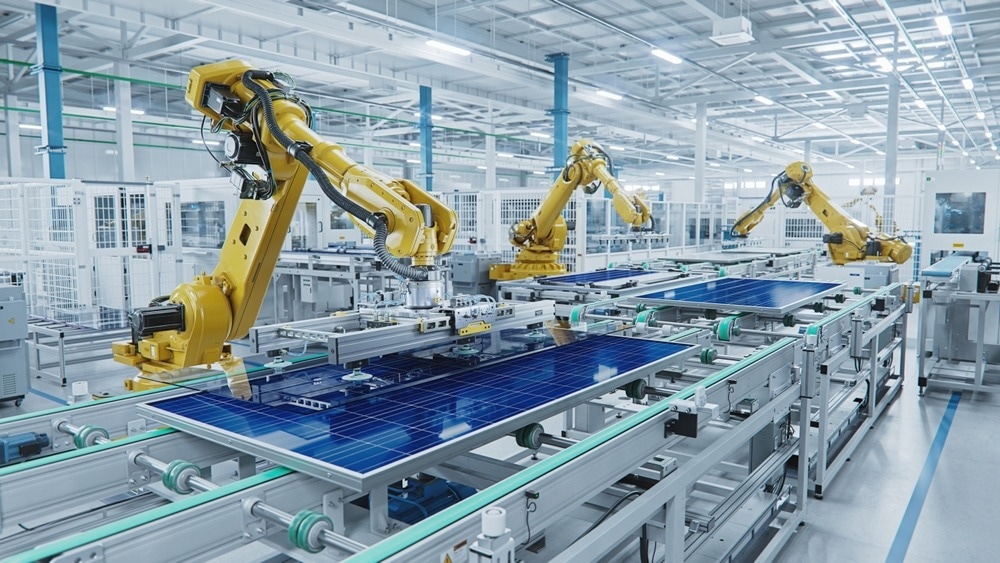Today, the growing competitiveness of industry alongside the move to Industry 4.0 demands the rapid production of high-quality, authentic products. Many industries are considering various new product designs and integrated manufacturing techniques to meet this challenge. The use of automation in industry is one growth area.

Image Credit: IM Imagery/Shutterstock.com
What is Automation Technology?
Automation is the control of machinery and processes by independent systems through the use of various technologies which are based on IT software or robotics. The implementation of automation in industry often increases productivity and reduces the labor costs of manufacturing processes.
Industrial automation utilizes various industrial communication devices, such as programmable logic controllers (PLCs) and programmable automatic controllers (PACs). Control strategies implement several technologies to achieve the desired result, and automated systems are essential to realize their potential.
Why is Industrial Automation Used?
Employing automation in industry improves the rate of production through superior control. It helps to improve bulk manufacturing by significantly reducing product processing time and improving quality. Therefore, a given labor input produces a higher amount of product.
Cycle times and effort are significantly minimized by integrating multiple processes in a production process using industrial automation. This helps to save labor costs and allows workers to concentrate on more value-added tasks.
Another benefit of automation in industry is eliminating human error, which can be costly and time-consuming. Adaptive control and monitoring of industrial processes at all stages of the production process maintain consistent and reliable product quality from the laboratory to the industrial level.
Manually checking for various process parameters can require assembly lines to be interrupted. With automation, this necessary but time-consuming and costly task is completely reduced. Process variables are automatically adjusted to define values using closed-loop control techniques in automated systems.
Industrial automation also reduces the complexity of operating processes and vastly improves worker safety. Automated machines can work constantly in harsh conditions, removing humans altogether from hazardous environments. This also has a knock-on effect on cost savings for companies.
Types of Industrial Automation Systems
There are several types of industrial automation systems in use today. The main types are listed below.
Fixed Automation
In fixed automation, the sequence of processing operations is set by the equipment parameters. Each operation in a fixed or hard automation sequence is usually simple; it is the combination and coordination of many operations into one piece of equipment that makes the system more complicated.
This type of automation is characterized by high initial investment cost and production rates. Therefore, it is suitable for products with very high demand and volumes. Machine transfer lines, automatic assembly machines, and certain chemical process instruments are examples of fixed automation.
Programmable Automation
In programmable automation, the production equipment is designed to be able to modify the sequence of operations to satisfy different product configurations. The system reads and interprets a set of coded instructions, which takes action and modifies production processes.
Programmable automation is particularly useful for batch production processes with a medium to high production volume that must change and recognize new products or sequences of operations.
Numerically controlled machines, steel rolling mills, paper mills, and industrial robots are examples of programmable automation.
Flexible Automation
A flexible or soft automated system is a system that is capable of producing a wide range of products simultaneously or over the production cycle with no time between changes. This type of automated system is fully programmable.
A flexible automation system does not suffer from loss of production time when reprogramming the automation system and changing the product’s physical parameters. As a result, the system can produce different combinations and schedules of products instead of requiring them to be manufactured in separate batches.
Examples of flexible automation systems include robots, material handling systems, CNC machining equipment and automated packaging systems. Humans are still necessary for flexible automation systems to manage, maintain, repair, and alter procedures as required.
The Future of Industrial Automation
Automation in industry is a cornerstone of manufacturing and other key sectors in the 21st century, with more sophisticated systems being developed every year. With the increasing implementation of AI, machine learning, and IoT technologies into automation systems, the field will continue to grow in importance in the future and may lead to another industrial revolution.
References and Further Reading
Elprocus (2023) An Overview on Industrial Automation – Need, Structure, Types & Technologies [online] elprocus.com. Available at: https://www.elprocus.com/an-overview-on-industrial-automation/
EAM (2022) 3 Flexible Automation Examples Explained [online] eaminc.com. Available at: https://www.eaminc.com/blog/flexible-automation-examples/
International Society of Automation (website) What is Automation? [online] isa.org. Available at: https://www.isa.org/about-isa/what-is-automation
Plant Automation Technology (website) Why is Industrial Automation Important? [online] plant-automation-technology.com. Available at: https://www.plantautomation-technology.com/articles/why-is-industrial-automation-important
Chui, M et al. (2017) Human + machine: A new era of automation in manufacturing [online] mckinsey.com. Available at: https://www.mckinsey.com/capabilities/operations/our-insights/human-plus-machine-a-new-era-of-automation-in-manufacturing
Disclaimer: The views expressed here are those of the author expressed in their private capacity and do not necessarily represent the views of AZoM.com Limited T/A AZoNetwork the owner and operator of this website. This disclaimer forms part of the Terms and conditions of use of this website.